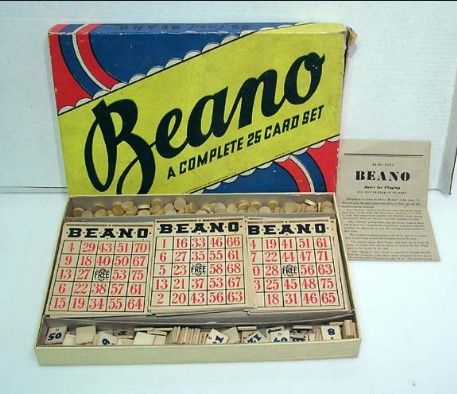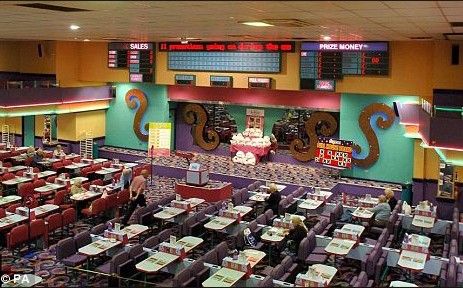The history of Bingo

Bingo is a very popular game that is enjoyed by millions of people across the world each week. It’s easy to learn and players have plenty of time to socialise while playing. These days 3.8 million Britons enjoy playing in both bingo halls, and more increasingly, online too.
But where did this game start? And how did it grow in popularity? Here’s a look through the history of bingo, and where its origins began.
The origins of bingo
So where did Bingo begin? Bingo is of Italian origins, beginning as the Italian Lottery, ‘Lo Cuioco del Lotto D’Italia’ in 1530. The game was then adapted and altered as it travelled from country to country, but still runs every Saturday night in Italy.
At the time corruption was a large problem in Italy, so the Lotto was devised as a way to choose leaders in each one of the cities. Each eligible citizen was assigned a number and then one was drawn at random to assign a new leader, and the new leader was then chosen by fate. Eventually the Lotto was adapted to a game which became a close resemblance to the game of Bingo we all know today.
Bingo in France
During the late 1770’s bingo was introduced to France, known under a new name, ‘Le Lotto’. The game was made up with playing cards that had three horizontal rows, with nine vertical columns of boxes. Each horizontal row contained five boxes with numbers and four blanks, arranged in a random order. The vertical columns might have numbers from 1 to 10 in the first row, 11 to 20 in the second row, and so on up to the last column of numbers 81 to 90. No two Lotto cards were the same.
To play the game ninety numbered chips were then placed in a cloth bag, and the Lotto callers would draw them from the bag one by one. When the number on the chip was called out, players would then cover the corresponding number on the card if it appeared. The first player to cover all five numbered boxes in one of the horizontal rows won the game and the prize money. The stakes were often too high for most people to participate, so the game was limited to the very wealthy.
Bingo in Germany
Then during the 19th century in Germany, a very different version of ‘Lotto’ appeared. Instead it was used as a game for children, aimed at helping students to learn maths, specifically their times tables. Later variations then developed to help teach spelling, history, and learn animal’s names.
Like Le Lotto the game gave players a game card which a selection of numbers or letters printed on. Then using a tombola drum, the master of ceremonies would draw out the tiles and the first player to cover a set amount of number or spell out a certain word would be the winner.
Why is it called bingo?

The earliest appearance of Bingo’s history in the United States came in the form of a game named ‘Beano’. Beano was introduced by entrepreneur Hugh Ward in the early 1920’s, and it began as a game popularised at carnivals in Western Pennsylvania. Players received one row of numbers and placed beans over the numbers as they were called out, and once the card was filled with beans the winner would call out “Beano!”
In 1929 Edwin Lowe, a New York toy salesman was at a carnival near Atlanta when a Beano session was taking place. A player with a winning card then mispronounced the game, excitedly shouting “Bingo!” which gave Lowe the idea to rename the game and market it as ‘Beano”.
Post-WWII Bingo
In the 1930’s Bingo became a huge hit in the US, with it estimated that 10,000 games were being played each week. This level of participation raised millions of dollars, and even encouraged churches and charities to use bingo as a way of raising funds. By the 1940’s bingo was no longer seen as an educational tool, and rather seen as a way of generating revenue and for entertainment. By 1945 at the end of World War II, bingo was used by local councils as a way of boosting morale and repairing Britain.
The rise of Bingo halls

Once the British Betting and Gaming Act legalised social gaming in 1960, bingo clubs were soon formed. The US name ‘Bingo’ was adopted for their games, keeping the original 90 number format. Many bingo halls were housed in cinemas, whose audiences had disappeared with the rise of television, so were happy to have the space occupied once again. Participation rates across a network of more than 1,000 bingo halls topped one million players per month, and revenue quickly soared. As well as being successful in numbers of participation, the bingo industry also became a major employer in the UK during the 70’s and 80’s. At its peak, British bingo employed more than 20,000 people in the UK. Today bingo halls can still be found all over the United Kingdom and the United States.
Online Bingo
While local bingo halls are still the most popular way to play bingo, playing bingo online has also grown in popularity. Between the years 2000 to 2016 online Bingo exploded with the new millennium and its popularity has grown ever since. Online bingo benefits from not having to play for real money, or pay an entry fee to take part, and you can often play for free.
The brilliant simplicity of bingo with its easy-to-learn rules, and low stakes, lends itself perfectly to a digital format. You can also play it from the comfort of your own home without the need to travel, ask someone to look after your children, or be constrained by time. The social aspect of traditional bingo halls aren’t lost either, with many websites having in-game chat rooms, making online bingo a great way to make new friends.
The future of Bingo?
So what’s next for bingo? With the rise and growth of mobile technology and social media, online bingo is growing every day. The variety of available games is also increasing, with popular slots and instant win games being added to online gaming sites. Most websites are now available as apps for smartphones, so players can logon and play their favourite games while they are on the move. Bingo has evolved a lot during its lifetime, from its roots in Italy to the world of the internet in 2016, it’s safe to say bingo is a firm part in our culture and is here to stay.



